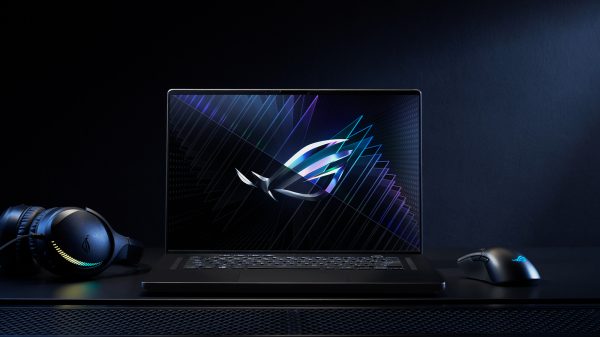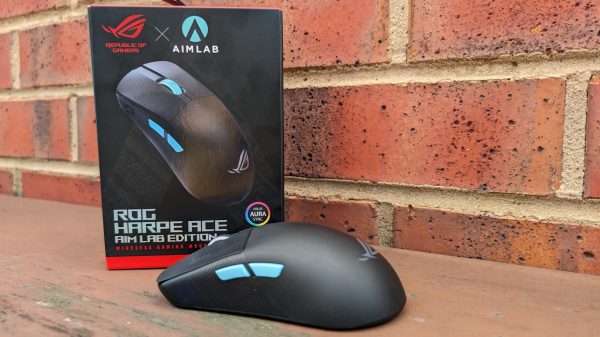I’ve reviewed a fair few laptops in my time at WellPlayed. From the obscenely expensive like the ASUS ROG Zephyrus Pro Duo and the Razer Blade 14, to the more unique like the ASUS ROG Flow Z13, these have all offered varied experiences. The one thing that has remained consistent across the board, however, is their reliance on either Intel CPUs, NVIDIA GPUs, or even both. Now don’t get me wrong, NVIDIA does a good job at making graphics cards, as does Intel for processors, but it’s nice to see competition. This is where the ASUS TUF A16 enters the fold, a laptop powered entirely by AMD.
Starting from the top, the ASUS TUF A16 (henceforth referred to as the A16) comes packed with a Ryzen 7 7735HS (8C/16T), a Radeon RX 7600S, up to 1TB of PCIe Gen 4 NVMe storage, and up to 32GB of SO-DIMM DDR5 4800MHz memory and a FHD (1920×1200) 16:10 165Hz display. This is all neatly packed in a 16” (diagonal) chassis and comes in at a weight of 2.2kg. There is an upgraded model that features beefier specifications that I will include in the overall spec list later, but the model lent to me for the purposes of the review was the more modest model. This model comes in at the respectable price of $2299 making it the cheapest laptop that has been reviewed on WellPlayed.
The initial impressions are mostly good (ignoring my disdain for Windows 11), with the only immediate criticism/concern stemming from the inclusion of McAfee. I have voiced on numerous occasions how terrible McAfee is as an antivirus measure, and in some cases can be considered a virus in and of itself, so seeing ASUS continue its trend of taking a kickback from McAfee to include its garbage bloatware on this otherwise great laptop is very frustrating to see. Once you have taken five to ten minutes to remove all traces of McAfee, you are left with a pretty good laptop.
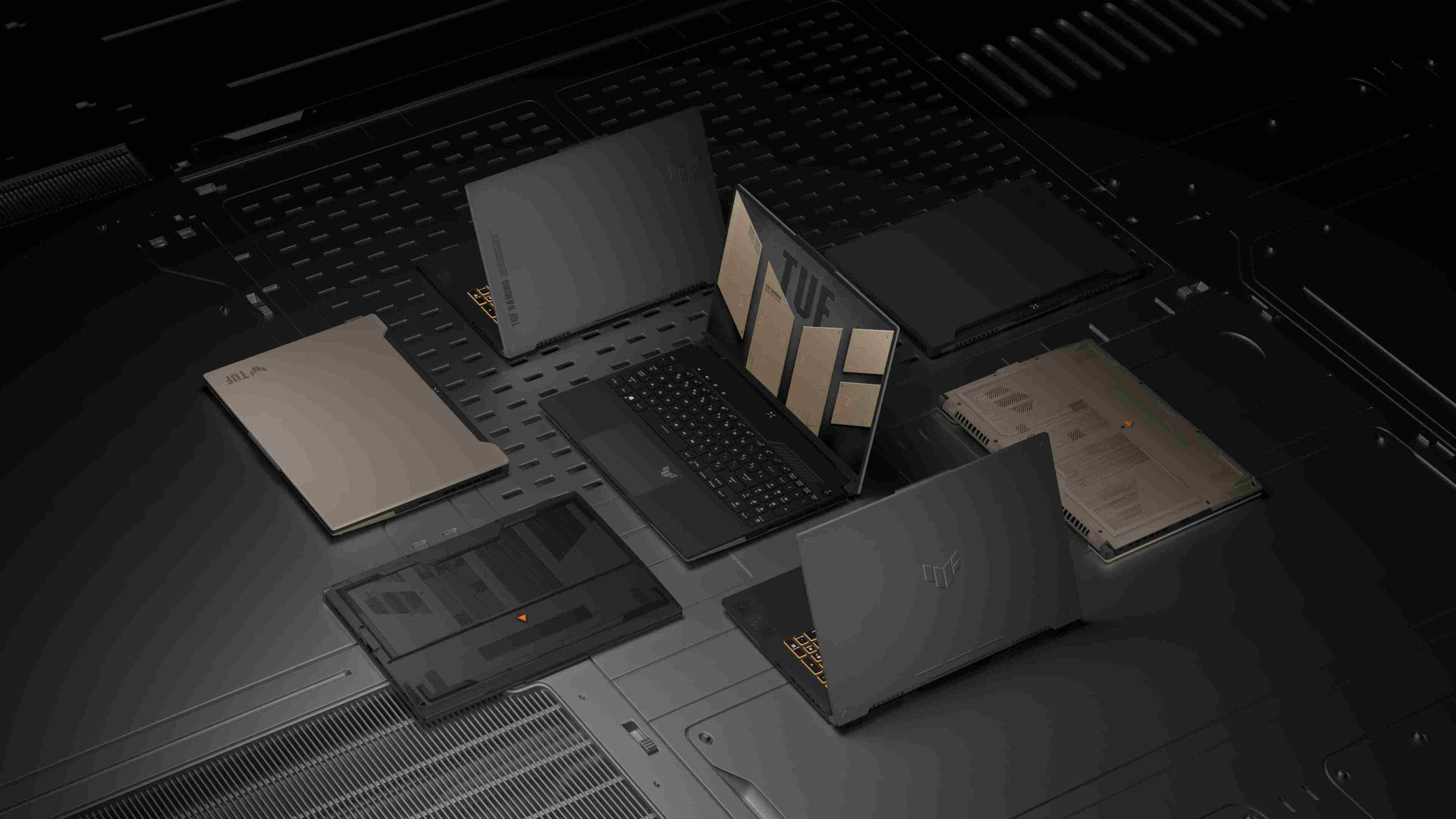
Continuing on the topic of preinstalled software, you would be forgiven for wanting to remove ASUS’ Armoury Crate, but it is here where we see an actual use for this software. In an effort to ensure efficient battery consumption, the A16 utilises AMD’s SmartAccess Graphics technology. This effectively means that, while not doing anything resource-intensive like gaming, the A16 will more than likely just use the onboard graphics found within the Ryzen 7 7735HS – the Radeon 680M. This little trick allows for the battery life of the A16 to really be stretched and also helps keep the thermals down during lighter workloads due to fewer components producing heat. This is especially important for a device that targets a lower price point as people with obscenely expensive and powerful laptops rarely use them on their laps as they are purchased as an alternative to a proper PC, yet people with more modest laptops are more likely to use them in a day-to-day scenario. Alternatively, if you wish to always be using the dedicated GPU, you can toggle it on using ASUS’ MUX switch.
My most recent laptop review found me at an impasse, the Omen 17 was a great laptop that I struggled to use normally because I did not enjoy its keyboard. Thankfully, the A16 is different and offers just a nice keyboard. The keys have a little bit of give but that actuation point is not so deep that it feels gross to use. Instead, it offers a great balance of tactility and rigidity. I would consider it a nice middle ground between my faithful Razer Blade 14 and the Omen 17.
Using this laptop for productivity-based workloads proved to be quite an enjoyable experience. As a serial Adobe Creative Cloud victim, having a laptop that can be quite responsive with more demanding workloads like using various Adobe programs at once is very important. Small things like bad timeline scrubbing in Premiere Pro and slow/unresponsive cursors in Photoshop can really be a spanner in the works when it comes to having a productive workflow in these applications. The A16 crushed it, and it owes it all to the decent parts included in it. The good IPCs (instructions per clock) in the 7735HS coupled with the decently fast DDR5-4800 memory, and PCIe Gen 4 NVMe SSD, allow for ingest to be a relatively simple affair.
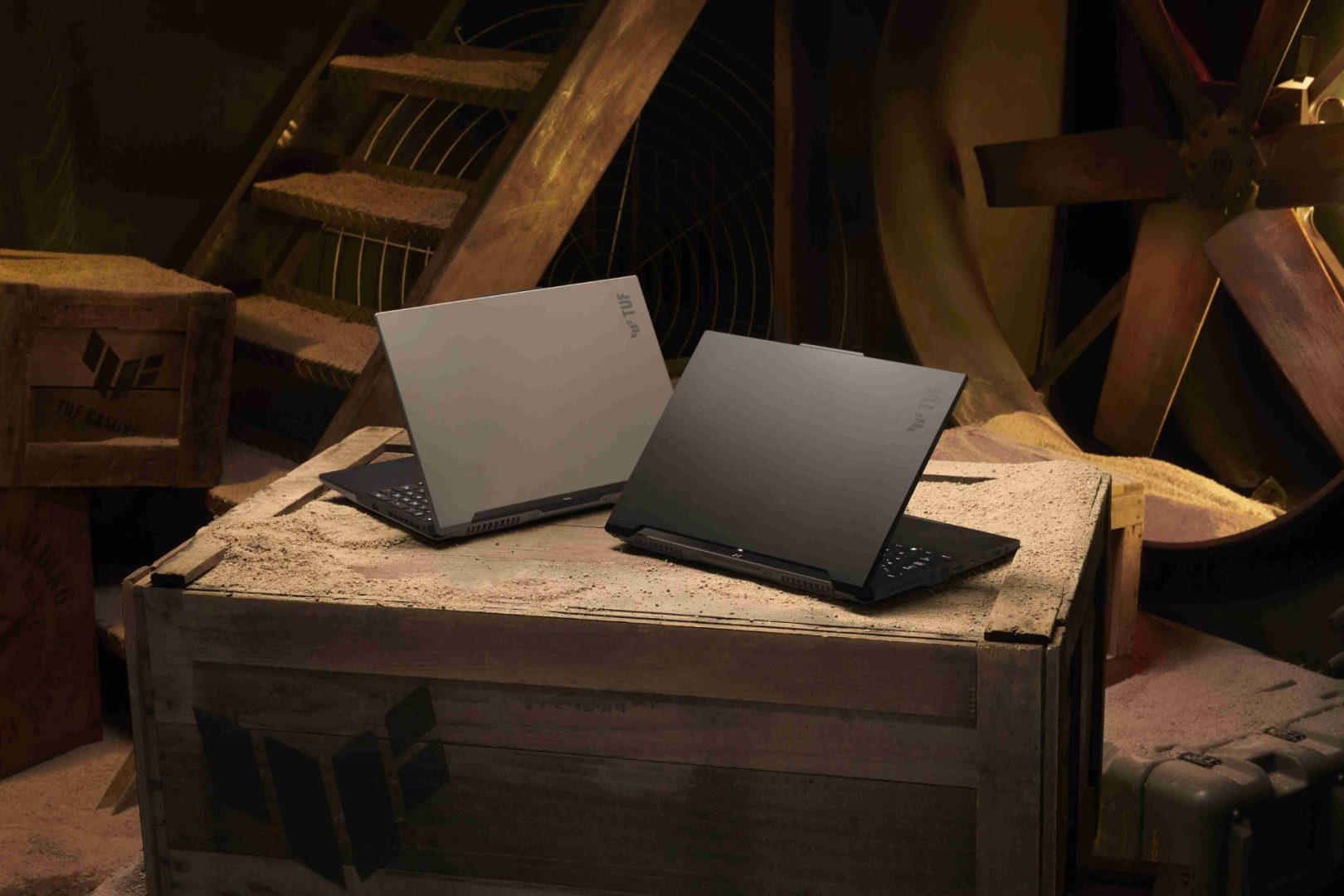
One thing I really did not expect to appreciate quite as much as I did was the display for the A16. It’s a pretty solid IPS panel that, while not quite as responsive as some of its competitors, offers a great experience. Don’t get me wrong, working and gaming off of this display was a treat, but that is not exactly where I found my most appreciation for it. I am a serial user of Steam’s Remote Play feature for in-home streaming to my Steam Deck, as that allows me to get really high-quality 60FPS gameplay on Valve’s portable device. One challenge I am always presented with is matching the display to the bounds of the Steam Deck’s 16:10 display. Because ASUS is committed to this unorthodox aspect ratio it means that, unless the game itself does not support it (which does happen), it meant that every game just fits perfectly in my beloved Steam Deck’s display. No workarounds, just pick up the game and it’s off to the races you go!
Onto the gaming capabilities of the A16, it comes as no surprise that, despite its more modest pricing compared to its more eccentric counterparts, it offers a great gaming experience. Your mileage may vary as, with a surprisingly NVIDIA-centric industry, not every game is overly fond of running Radeon graphics cards. However, the most issues you will run into are with older titles, where NVIDIA might have done their classic tactic of paying developers to include bad technologies that are purpose-built to make Radeon cards run like junk (read: NVIDIA GameWorks). More modern titles tend to cater to both Team Red and Team Green and, contrary to popular belief, a game being partnered with AMD is actually a good thing unlike a game being partnered with NVIDIA. Regardless, the titles that I ran on the A16 were handled pretty well. I, of course, tried my beloved Star Citizen and it was definitely able to handle it for the most part. However, it also made me realise how packaging a laptop with only 8GB of VRAM and 16GB of RAM makes recommendations for it a little tougher in the modern day and age.
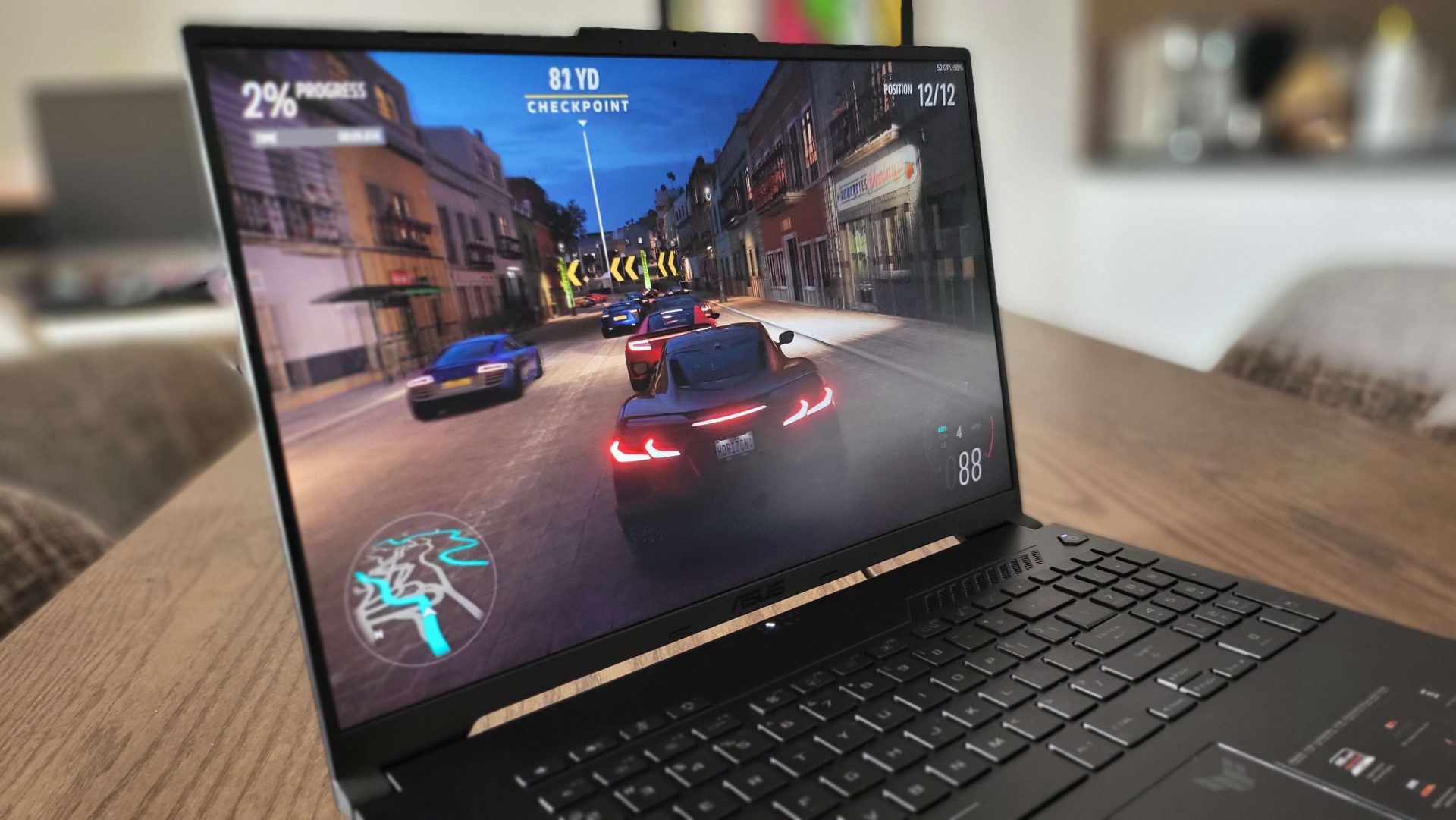
We have seen an increase in games that require a higher amount of memory, both for the CPU and the GPU. Games like the controversial PC port of The Last of Us Part I, the aforementioned Star Citizen, the newly released Immortals of Aveum, and even older titles like Cities: Skylines all really benefit from higher memory capacities. If you were looking at a laptop that is at least a little futureproofed, I would recommend looking at upgrading the memory to 32GB as that should alleviate a lot of issues, but the VRAM issue cannot be resolved as even the upgraded 7700S that it can feature still only has 8GB of VRAM.
The memory limitations aside, games that don’t require those increased capacities run superbly. Returnal, DOOM Eternal, and Forza Horizon 5 all ran really well and the A16 is more than capable of delivering a great gaming experience. Looking at a more expanded list of specifications for the A16, it makes complete sense that it was able to handle these games with ease:
- CPU – Ryzen 7 7735HS (8C/16T)
- GPU – AMD Radeon RX 7600S (8GB)
- Memory – 16GB DDR5-4800 (2 x SO-DIMM) (can be upgraded to 32GB)
- Storage – 512GB PCIe Gen 4 NVMe M.2 SSD (can be upgraded to 1TB) (2 x M.2 Slots, user accessible)
- Network & Communication – WiFi 6 802.11ax Dual Band 2*2 + Bluetooth 5.3 Wireless Card
- Display – 16” 165Hz FHD+ 16:10 (1920×1200 WUXGA), 7ms, 250 nits, IPS, sRGB: 100%, Adobe: 75.35%
- Battery – 90WHrs, 4S1P, 4-cell Lithium Ion
- Power Supply – 240W AC Adapter, Output: 20v DC, 12A, 240W, Input: 100-240C AC 50/60Hz universal
- Camera – 720p HD Camera
- OS – Windows 11 Home
- Price – A$2,299 (starting price)
- CPU – Ryzen 7 7740HS (8C/16T)
- GPU – AMD Radeon RX 7600S (8GB)
- Memory – 16GB DDR5-4800 (2 x SO-DIMM) (can be upgraded to 32GB)
- Storage – 512GB PCIe Gen 4 NVMe M.2 SSD (can be upgraded to 1TB) (2 x M.2 Slots, user accessible)
- Network & Communication – WiFi 6 802.11ax Dual Band 2*2 + Bluetooth 5.3 Wireless Card
- Display – 16” 165Hz FHD+ 16:10 (1920×1200 WUXGA), 7ms, 250 nits, IPS, sRGB: 100%, Adobe: 75.35%
- Battery – 90WHrs, 4S1P, 4-cell Lithium Ion
- Power Supply – 240W AC Adapter, Output: 20v DC, 12A, 240W, Input: 100-240C AC 50/60Hz universal
- Camera – 720p HD Camera
- OS – Windows 11 Home
- Price – A$2,499 (starting price)
Moving onto the benchmarks for the laptop. As is usual with the other laptop reviews, I ran it through multiple passes of the included Forza Horizon 5 benchmark and this thing did really well considering its more modest configuration compared to the others on the benchmark list. FH5 still looks and runs incredibly well, so having hardware that can capitalise on the game is fantastic. Here are the results:
Forza Horizon 5 Benchmark (Extreme)
Laptop Price/Performance Chart
While the laptop may be towards the bottom of the benchmark chart itself, this isn’t necessarily a bad thing. The other laptops are sporting considerably beefier hardware within their chassis and cost considerably more as a result. The A16 is the cheapest laptop that we have ever had on WellPlayed by over $1000, so the fact that is still able to have comparable performance to a $6000 laptop with considerably weaker specifications is a marvel in and of itself. I really love it when manufacturers are able to properly balance their hardware and this is one such case. The most well-balanced laptop that we have featured here is the Omen 17 which, while coming in at a price of $3429, is able to achieve a price/performance ratio of around $37.07 per frame and an average framerate of 92.5FPS. Comparatively, while the overall framerate is lower at 70.2FPS, the A16 still manages to cost around $32.75 per frame.
An important part of balancing components is ensuring that you have the correct cooling capacity to ensure that these parts don’t start suffering from thermal throttling. I am glad to report that the A16 did not suffer from any such issues. Granted, it was tested in a temperature-controlled room with an ambient temp of 21°C, but it still managed to sit between 65°C and 70°C. While that is warm, it is also no cause for concern as there is still quite a bit of thermal headroom there to work with. The laptop can get quite noisy when keeping these temperatures under control, which is understandable, but the noise never felt like it was piercing or overbearing. Most people wear some kind of earphones or headphones when gaming so it is pretty easy to ignore the sound coming from the fans, and because of the presence of AMD’s SmartAccess Graphics tech, it is unlikely that you will hear too much of the fan in your standard day-to-day operation.
Final Thoughts
While it may not be the most powerful laptop that we have reviewed here at WellPlayed, the ASUS TUF A16 Advantage Edition (2023) is a solid laptop that offers decent performance at a really decent price. Coming in at a starting price of $2299, the A16 manages to achieve a price/performance ratio of $32.75 per frame, making it the most cost-effective laptop that we have ever reviewed. It does this while maintaining solid thermals and noise, while also offering potential avenues for expanding its storage. If you need an affordable gaming laptop that can run most modern games, this is a laptop that should not be overlooked.
Review unit supplied by manufacturer
Click here for more information on WellPlayed’s review policy and ethics


Jordan lives and breathes Dark Souls, even though his favourite game is Bloodborne. He takes pride in bashing his face on walls and praising the sun. Hailing from the land of tacos, he is the token minority for WellPlayed.





















